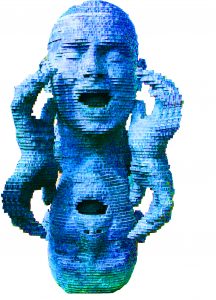CALL FOR PARTICIPATION AT THE XXV EFSS’ 2020 “SEMIOTICS OF THE DIGITAL FACE”
With a Call for papers for the 4th issue of the journal Digital Age in Semiotics and Communication (ISSN, DOI, CEEOl)
(6-10 September 2020, Sozopol, Bulgaria)
(Deadline for the proposals: 31 March 2020)
The advent of the internet and digital technologies in general wrought deep changes to the socio-cultural tissue in almost every part of the world. Statistics say that the so called “internet natives” perceive more faces through digital images than in a real face to face situation. So do the rest of the digitally active people today and for sure this tendency is going to expand in future. If the face is a semiotic universe in itself, we may start to question what further semiotic phenomena derive from its massive digital intermediation. It goes without saying that the social media foundation is based on the face(book), and it is interesting to research the various strategies of the face representation as a core of our digital identities. What about the selfie revolution: does the technological opportunity push the massive digital narcissism, or the cultural change went the other way around? What can see a semiotician in the software for digital face beautification: the same narcissistic drive for augmented self-expression, or a mercantile attitude towards the opportunity to make a profit from the social media popularity?
Then we have the universe of the digitally generated faces. The internet culture has created a whole new language of emojis and emoticons, starting form the stylized representations of the basic human facial expressions. Our inventory of communicating face emotions is extended beyond our imagination and we often meet and interact with computer generated interlocutors, whose face expressions are not less real than ours, although there is not a “feeling” entity behind them. Thanks to digital special effects we enjoy realistic encounters with the emotional faces of Hollywood myths passed away long ago, or their face aging 30 years in 3 seconds. We have the same opportunity on our smart devices where our faces are digitally transformed into a fictional character in real time and inserted in imaginary worlds, for the benefit of our friends and followers.
Today the semiotic potential of the digitalized face is a business and shapes new cultural reality. We invite contributions (but not limited) to the following themes:
- Face and identity in social media
- The selfie revolution
- Digital face beautification
- Computer-generated faces
- Face recognition technology
- Digital special FX of the face
- Non-human digital faces
- Industries of the face in the internet
- Face manipulation apps
- The emoji universe
- Robot faces
In order to enrich the interdisciplinary perspective, we are negotiating with keynote speakers who are leading researchers in the field together with some of the world’s most prominent semioticians.
During the school there will be organized a workshop on Virtual Reality and special FX.
Registration fee: 50 Euro (80 for non IASS members). The fee includes:
– access to all lectures, workshops, seminars and round tables,
– badge and materials,
– 10 coffee breaks,
– A welcoming reception on 7 September
EFSS 2020 is organized by the Southeast European Center for Semiotic Studies, with the support of the STRATEGIC DEVELOPMENT FUND of New Bulgarian University
This project has received funding from the European Research Council (ERC) under the European Union’s Horizon 2020 research and innovation programme (grant agreement No 819649 – FACETS).
EFSS 2020 is an event under the auspices of the International Association for Semiotic Studies (IASS) and in collaboration with Applied Semiotics and Communication Laboratory, Research Center, FCRP, SNSPA, Romania



Leave a Reply
You must be logged in to post a comment.